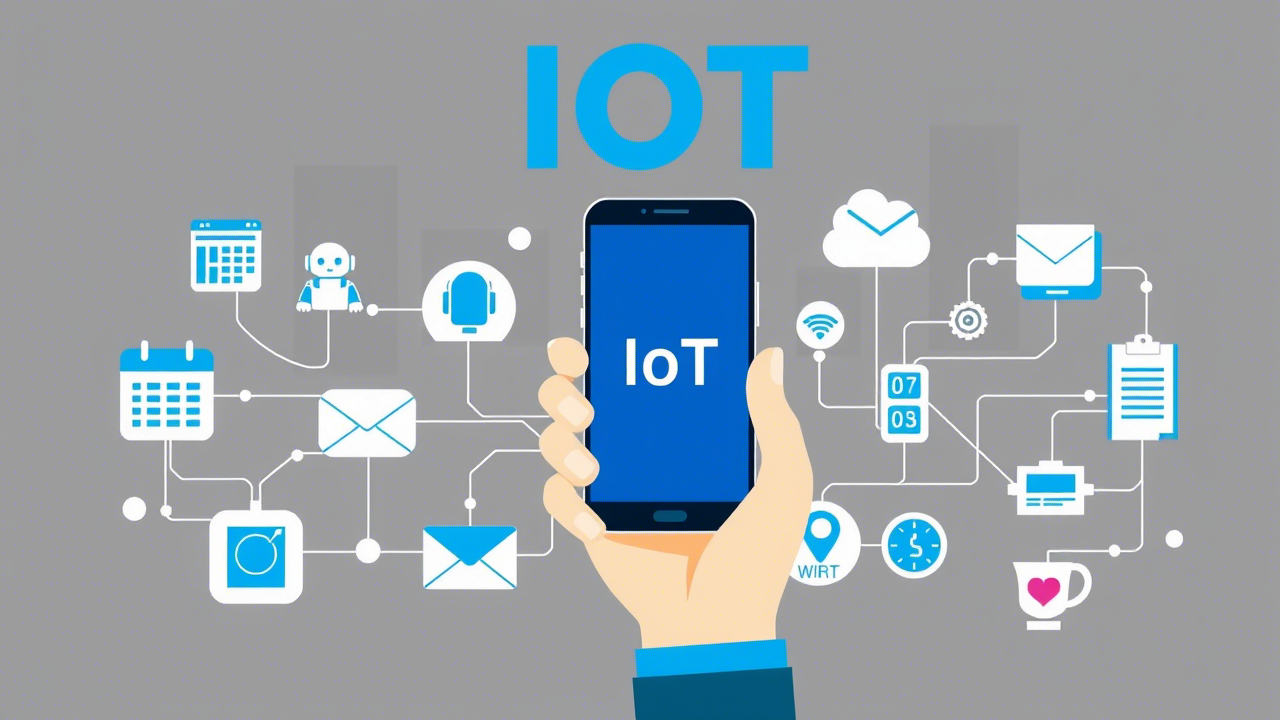The Internet of Things (IoT) is changing company operations in the hyperconnected digital terrain of today. From manufacturing and healthcare to retail and logistics, businesses all around are using IoT Product Development to keep competitive. Beyond simply creating linked devices, though, the emphasis is now on scalability. This post will discuss why scalable IoT Product Development is a strategic investment for profitable businesses.
Describe IoT product development here
IoT Product Development is the design, construction, and implementation of Internet of Things devices together with the accompanying software infrastructure. This covers hardware elements including sensors and microcontrollers as well as cloud platforms, mobile apps, and data analytics tools cooperating to gather, process, and act upon real-time data.
The Commercial Argument for Scalable IoT Product Development
Scalability is now a must; it is not a luxury. Scalable solutions give businesses the adaptability to fit rising demand, user base, and data loads as they expand and markets change.
Futureproofing Corporate Activities
Effective businesses see that technology is always changing. By allowing new features, devices, and integrations without significant overhauls, scalable IoT product development helps them to future-proof their investments.
Improved Cost Control and ROI
Scalability guarantees that IoT solutions might develop little by bit. This lowers long-term running expenses and helps to minimize the need for total redesigns. Starting small and building their IoT ecosystem over time, businesses can match their budget and expansion path.
Fundamental Elements of Scalable IoT Product Development
Modular Building Design
Individual components can be upgraded or replaced under modular design without affecting the whole system. This helps effective resource allocation and flexibility.
Cloud-Based System of Infrastructure
Virtual limitless storage and processing capability abound on cloud platforms. They advocate flawless data integration across geographies, remote device management, and real-time analytics.
Interoperability guidelines
IoT Product Development has to follow open protocols and standards if we are to reach actual scalability. These guarantees fit between systems and devices from several manufacturers.
Stable Security System
The risk rises along with the increasing number of linked devices. Advanced security features including end-to—end encryption, safe boot, and multi-factor authentication are included into scalable solutions.
Advantage of Funding Scalable IoT Product Development
Improved Operational effectiveness
Scalable IoT systems let real-time monitoring across several touchpoints and automation. This raises production and lessens hand-operated involvement.
Data-Driven Choice Making
Scalable infrastructure helps companies to manage more data, so facilitating more accurate analytics and wiser decisions.
Quicker Time-to—Market
A well-made IoT system lets businesses react fast to changes in the market by cutting development cycles for new features and services.
Advantage Competitively Competitive
Adopting scalable IoT Product Development helps businesses to surpass customer expectations, improve performance, and present creative ideas.
Industry Use Cases
To track equipment, control inventory, and guarantee predictive maintenance, smart manufacturers use scalable IoT solutions.
Medical Sector
All while scaling to serve expanding populations, IoT-enabled devices help monitor patient vitals, manage chronic diseases, and simplify healthcare delivery.
Commercial
IoT is used by stores for customer analytics, inventory control, and tailored marketing. Scalable solutions manage changing needs during busy times.
Supply Chain Management
Scalable IoT systems guarantee flawless operations and effective resource allocation from fleet tracking to warehouse automation.
Problems Creating Scalable Internet of Things Products
Variety of Devices
Standardizing among the great variety of devices and suppliers is challenging. A scalable answer has to support a large range of hardware.
Data Handling
Large data handling calls for effective storage, processing, and retrieval systems. Key is cloud integration.
Control of Regulatory Compliance
Particularly in relation to sensitive data, meeting both local and international compliance criteria is absolutely vital.
Strategic Partnership: Their Function
Working with seasoned technology partners guarantees that scalability is included into every stage of IoT development. These alliances provide industry insights, modern tools, and frameworks.
Conclusion
Scalable IoT Product Development is a strategic must in the age of digital transformation. It helps companies to be creative, flexible, and successful in an always shifting market. Investing in scalable solutions not only improves operational capability but also future-proofs development of businesses. Whether your company is startup or established, creating scalable IoT products guarantees long-term viability in the linked world.
Integration and optimization have to be taken care of in the last phase of development. Here is where knowledge in IoT Development becomes absolutely vital. Selecting appropriate partners and models guarantees flawless IoT development and future-ready scalable solutions.
FAQs
Why in IoT product development is scalability crucial?
Scalability guarantees performance, security, and economy by letting your IoT infrastructure flourish naturally as your company grows.
What distinguishes scalable IoT products most importantly?
Key characteristics include modular design, cloud-based infrastructure, strong security measures, and respect of interoperability criteria.
Are scalable IoT solutions something small businesses might use?
Certainly. Small businesses can begin with little resources and scale and expandable IoT product development help them to do so.
How might IoT systems with scalability foster creativity?
They let businesses keep ahead of rivals and satisfy changing consumer needs by fast implementing fresh features and services.


